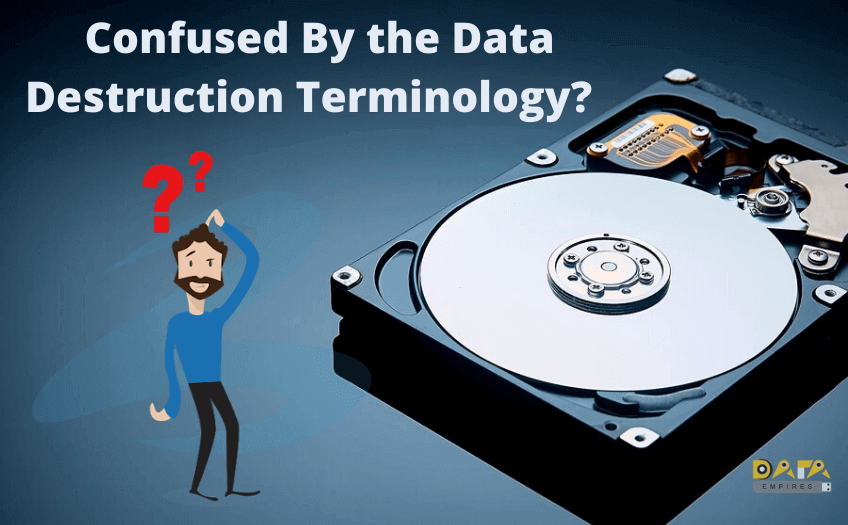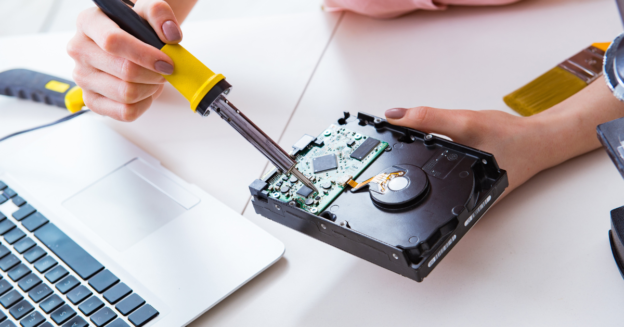Data destruction terminology has been classified into different ways by the industry gurus and technical publications. The term “Data destruction” is even sometimes referred to as data sanitization. It is not that easy to explain it in a lay man’s term due to the different viewpoints. In simple words, it is an act of making the data irrecoverable rapidly turns sometimes clarifying terms.
Data Destruction Terminology: A Definition
According to TechTarget, “The process of destroying data stored on tapes, hard disks and other forms of electronic media so that it is completely unreadable and cannot be accessed or used for unauthorized purposes.”
However, to make sure that it is rightly gone and to observe the standard of the data protection, you actually need more. Here come the term data erasure and data sanitization.
Data Destruction is Different from Data Sanitization
Have a look at examples shared on the issue:
When it comes to removing the single file, lots of data destruction systems remove the pointers to a selected instead of the entire file. Therefore, the data is still available on the machine. However, it is not easily available and accessible on apps or operating systems. In some cases, “file shredding” can make a copy of the file; however, it’s unclear that the overwriting procedure has been completed successfully.
Even after removing the data on a device, there are chances of leaving full data behind. It is essential to know in case of reuse, resell, or donate the device to somebody else. The details are usually recovered through keyboard methods or with the support of forensic tools.
How much data is still there and how to access it again is completely depends on the media and the specific technique used for data destruction. In some cases, untested data destruction may turn into data exposure. The possible risk is associated with the value and confidentiality of the data and the level of data protection at the regulation of the industry needs.
Difference between Data Destruction and Physical Destruction
Destroying the data is different from media destroying on the device where the data was stored. Here I am discussing physical destruction.
The term ‘Physical destruction is referred to as making a device useless. The physical destruction can engage shredding physical devices into small pieces with the help of large mechanical equipment. It is a procedure of rearranging the compelling fields on hard disk drives (HDDs) with the help of degaussers. There are lots of techniques available to do the same.
Possibly, the physical destruction may ruin the data completely. At the same time, complete physical cracking of the device doesn’t give 100% assurance of the data ends.
This fact is particularly right with advanced flash-based technologies having SSDs. In solid-state drives, data is stored thickly that it can stay unbroken in shredded fragments.
The data remain safe in the hard disk drives (HDDs). It is essential to take a proper process, and the magnetic force of the degausser should be strong as necessary to manage the HDD you are planning to destroy. If not, data may not be totally affected. At the same time, in the case of degaussing, non-magnetic drives (SSDs), once again, there is no loss of the data.
By considering the points mentioned above, it is clear that physical destruction is not enough to say that data is destroyed. The excellent verification of the data destruction process should not be overlooked.
Beyond Data Destruction to Ensure that Data is Deleted for Future
How do you confirm that the data is entirely removed from the IT assets?
So it is advisable to consider something more than data destruction and opt for data sanitization.
The term ‘Data sanitization’ is one step ahead of data destruction. The data destruction procedure is confirmed with the help of the standard verification techniques and creates a licensed report. A file or even a device that has been sanitized has been confirmed to leave the targeted data without any option of recovery. This process is good to go with when the data is highly sensitive. It gives you the surety to diminish the danger of unauthorized access to the data. It is particularly important for highly synchronized businesses. However, the technique of data sanitization is sometimes necessary for data protection and data privacy fulfillment.
There are three top techniques to get data sanitization: physical destruction (using the process of verification), data erasure, and cryptographic erasure. These techniques are quite helpful. It is essential to select the better one that depends on the device you are expected to sanitize, industry permissions, fulfillment with data protection rules as well as tolerance of the risk. Some of the company is expected to use the above-stated methods, either individually or even with the combination of two.
Wrapping Up
If you are looking for professional data destruction services via degaussing, crushing, erasure, or on-site hard drive shredding and data destruction standards, then get in touch with us today. Our advanced data destruction services make sure that all the sensitive data is destroyed, adhering to the industry standards from scratch to end. We are offering various types of best data destruction services to make sure that your business remains compliant when disposing of your legacy IT Assets



